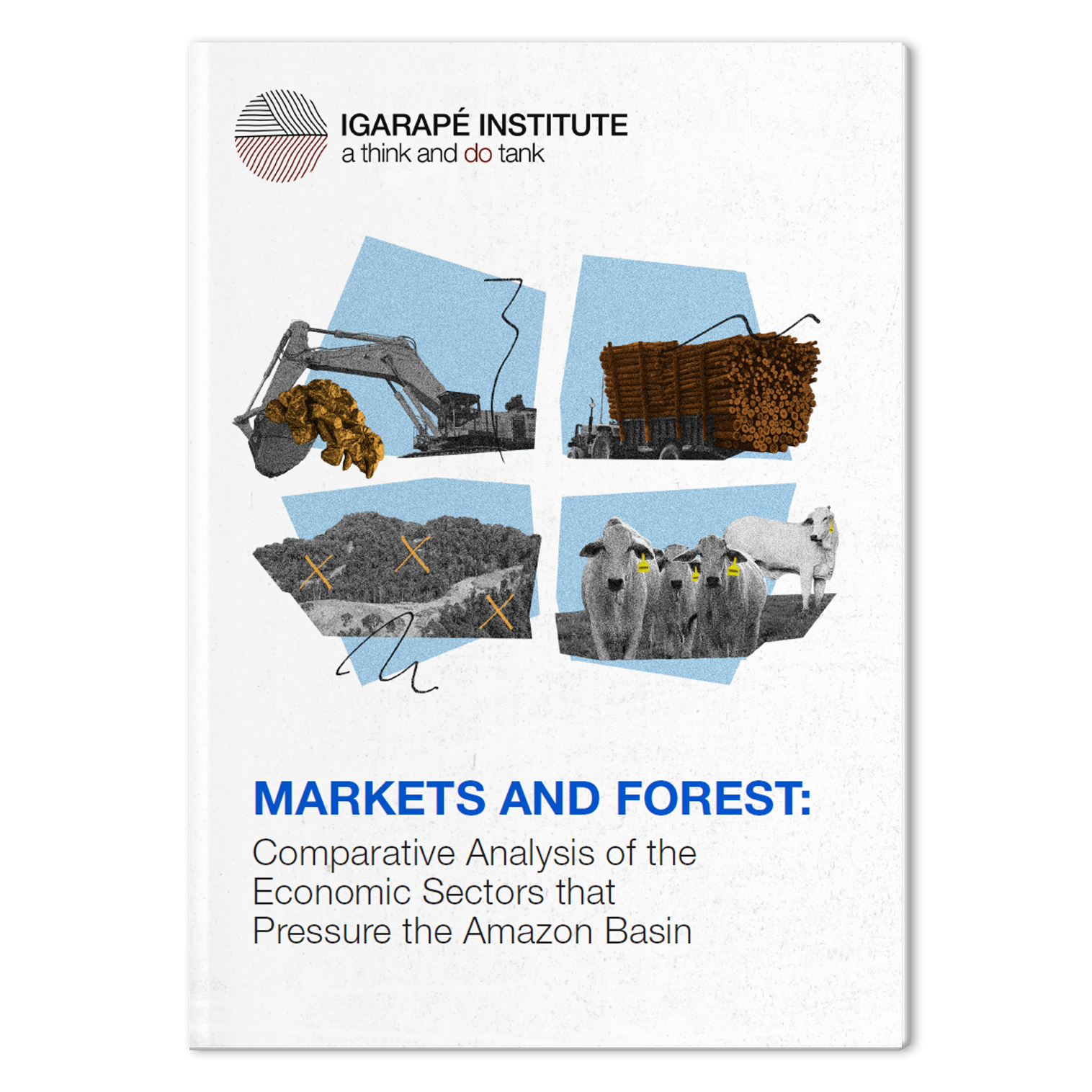Markets and Forest

The Amazon is the largest tropical forest on the planet, harboring about 10% of global biodiversity and playing a vital role in regulating the climate and the carbon cycle. Despite its socio-environmental relevance, the Amazon is under growing pressure from the gold, timber, cattle, and land markets — economic activities that drive deforestation and fuel illicit dynamics, while also impacting the livelihoods of Indigenous and traditional communities, whose ways of life are deeply intertwined with the region’s delicate ecological balance.
These production chains coexist with informal, irregular, and criminal practices, becoming targets of organized crime in the region. This hybrid character distinguishes them from other illicit markets: unlike drug or arms trafficking, where illegality is intrinsic, in environmental crime one of the main challenges lies precisely in tracing and proving the illegality of natural resources extracted or of the conversion of native forest for agricultural and livestock purposes.
In their efforts to regulate, control, and oversee these economic activities, the authorities of the eight countries that comprise the Amazon Basin — Bolivia, Brazil, Colombia, Ecuador, Guyana, Peru, Suriname, and Venezuela — have adopted different strategies. Regulatory differences, gaps in legislation, and the absence of effective mechanisms for coordinated regional action are evident.
Faced with this challenge, this study conducts a comparative analysis of the institutional and regulatory structures of the four main markets associated with deforestation in the Amazon: gold, timber, livestock, and land. The goal is to understand the extent to which Amazon Basin countries have the conditions and are prepared to regulate and control these markets.
Illegality permeates the extraction, production, cultivation, transportation, trade, and incorporation of these natural resources into production chains. The criminal origin of a natural product is often concealed through falsified documents, corruption, exploitation in prohibited areas, or failures in oversight, making it essential to distinguish between legal and illegal practices.
Learn more about this topic in Under the Radar: Territorial and Regulatory Security Risks in the Brazilian and Colombian Amazon, Transforming the Economy in the Amazon and the Strategic Paper 64, Dynamics of the Ecosystem of Environmental Crimes in the Brazilian Legal Amazon
Read the publication



